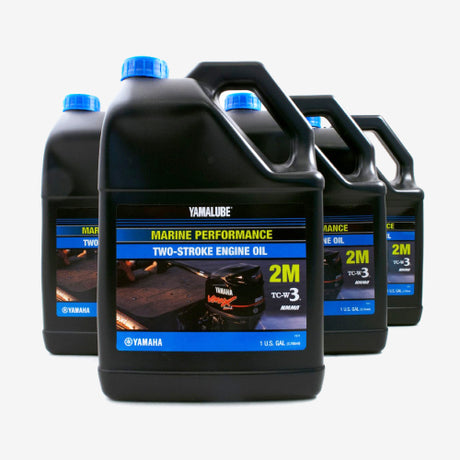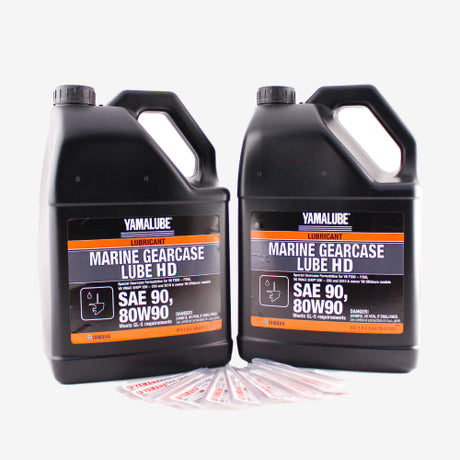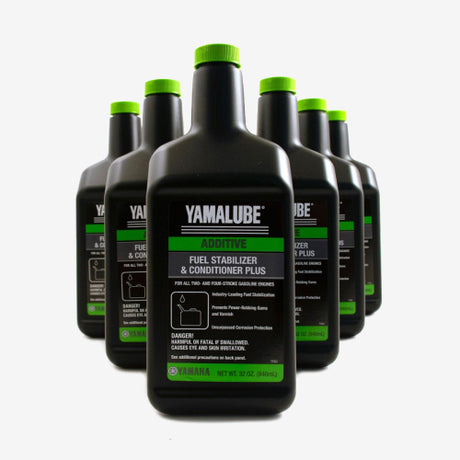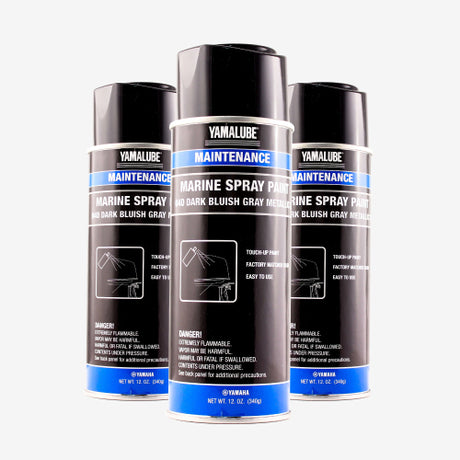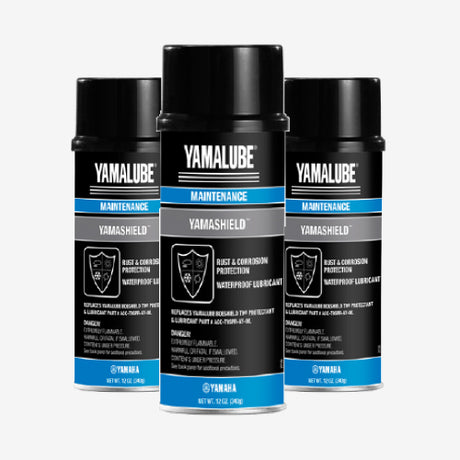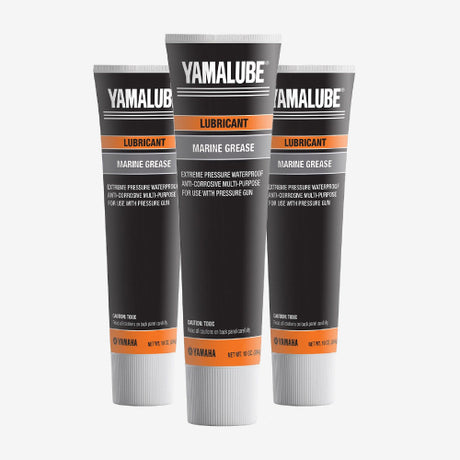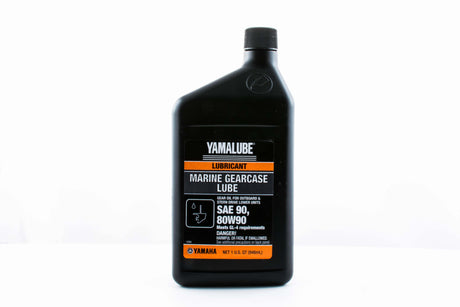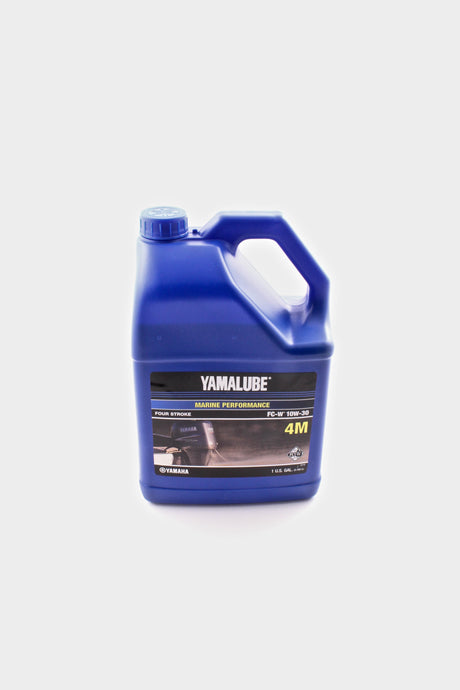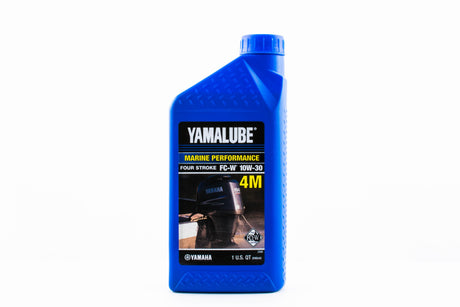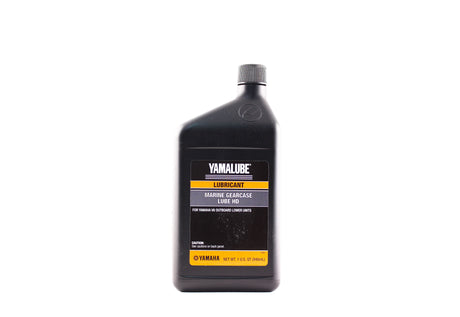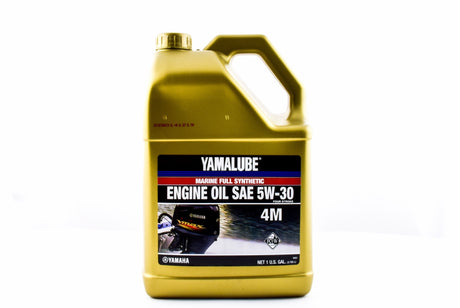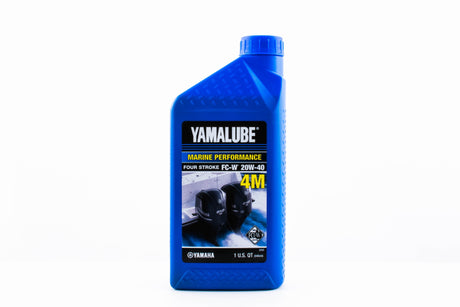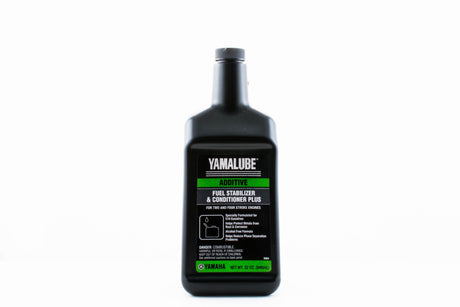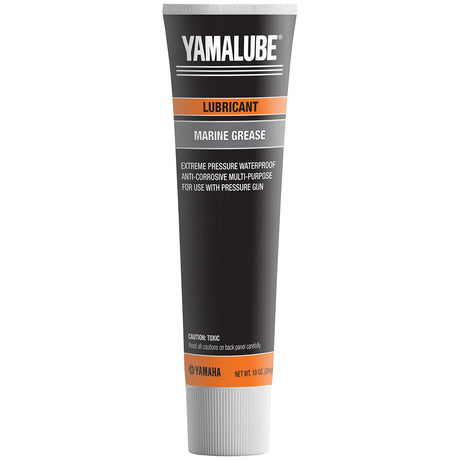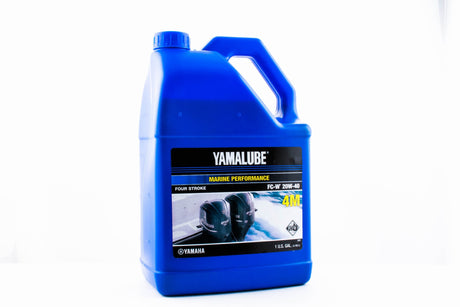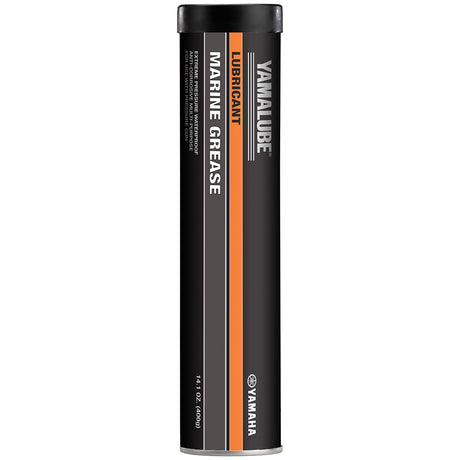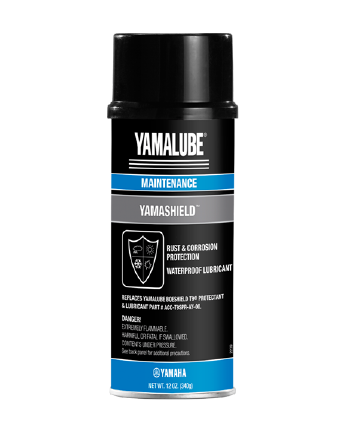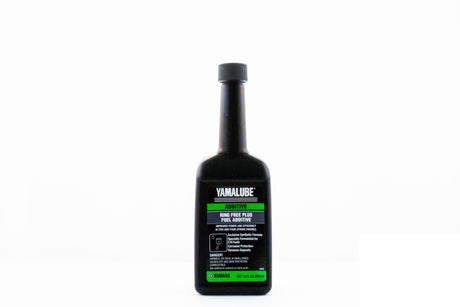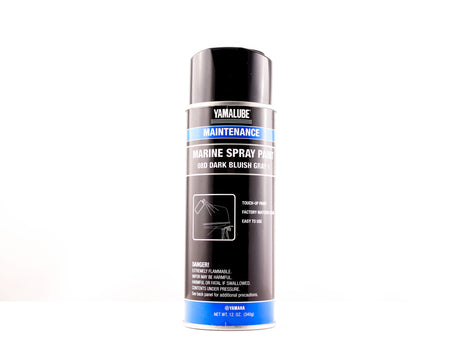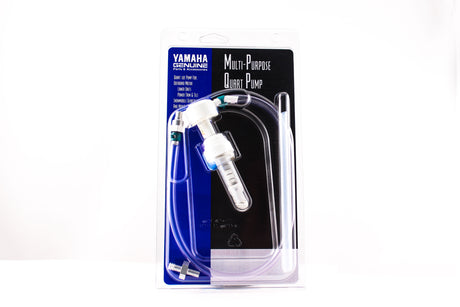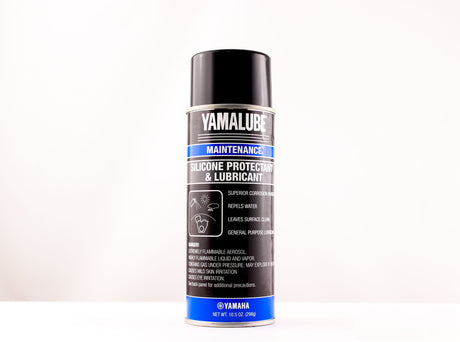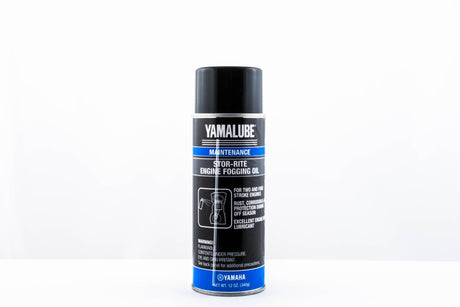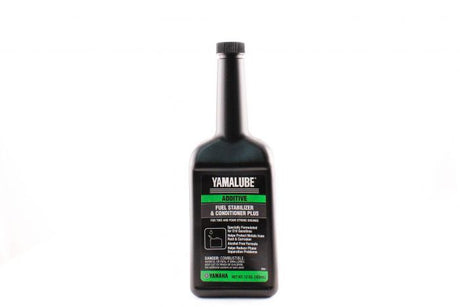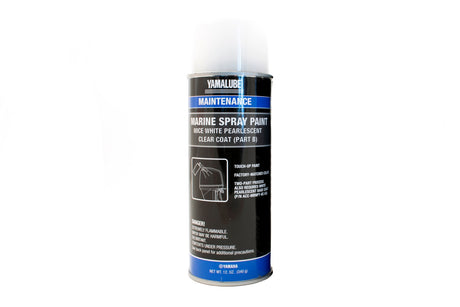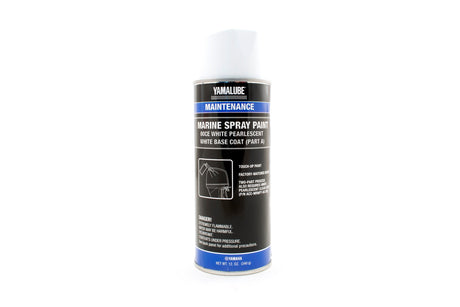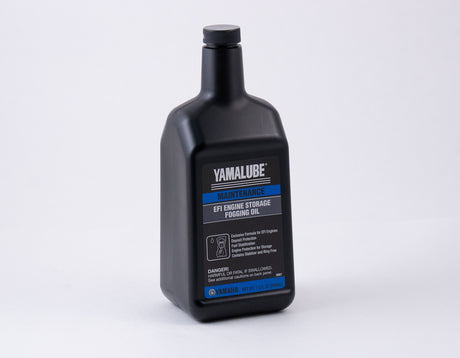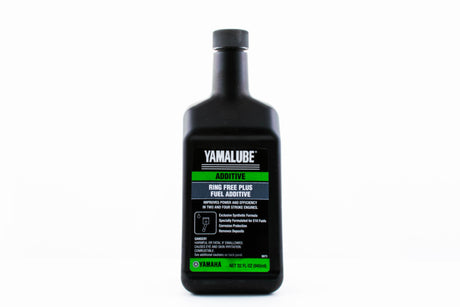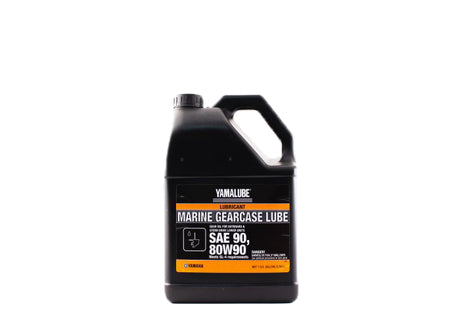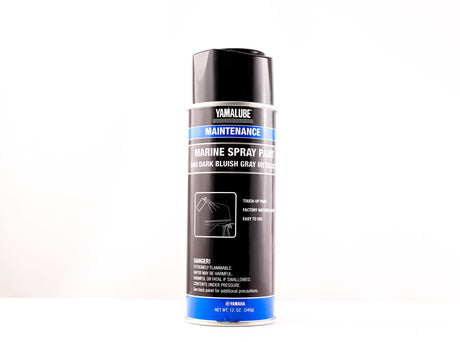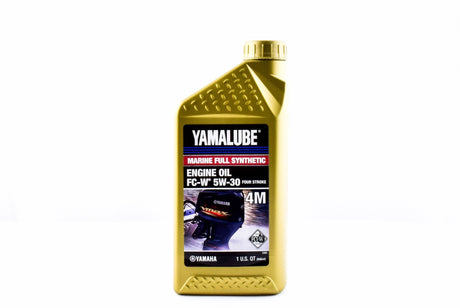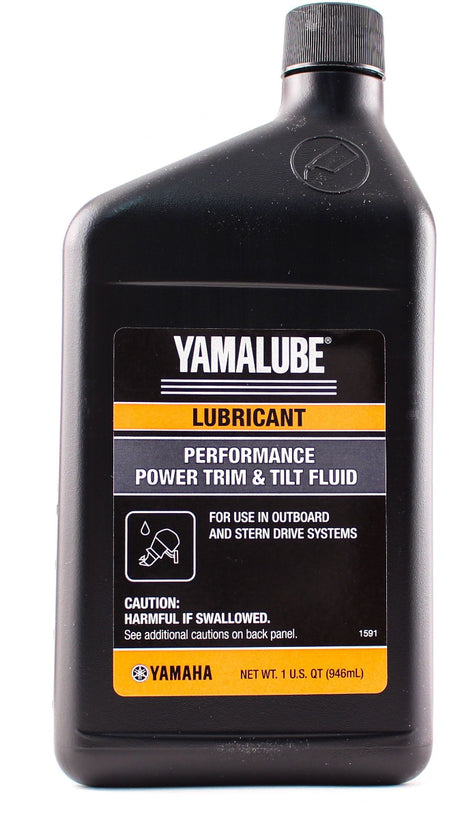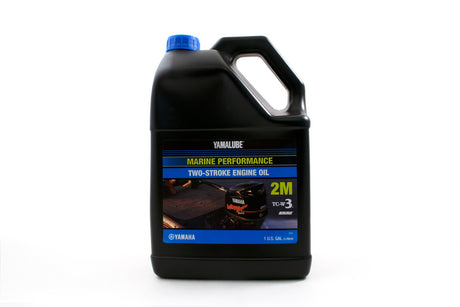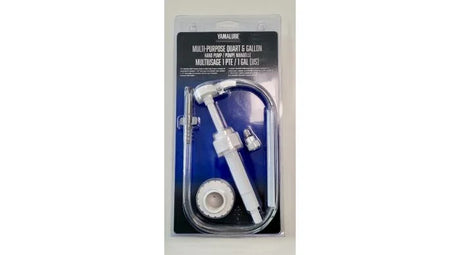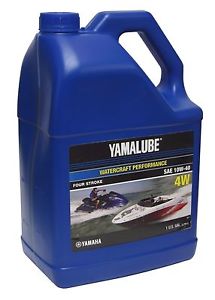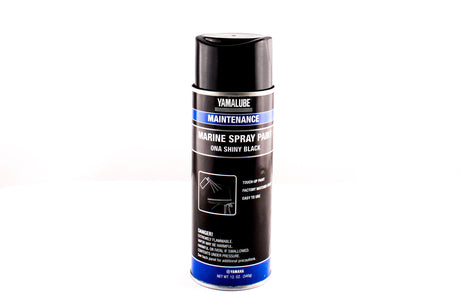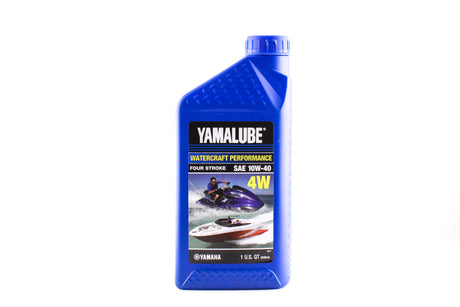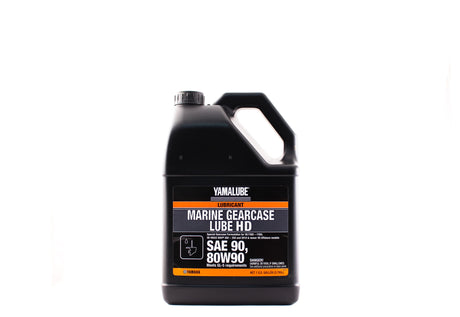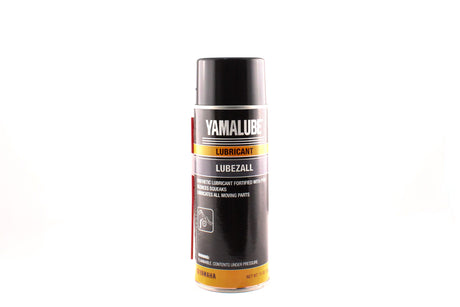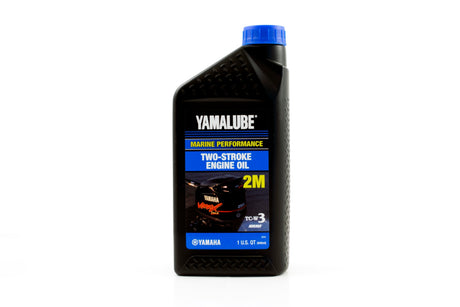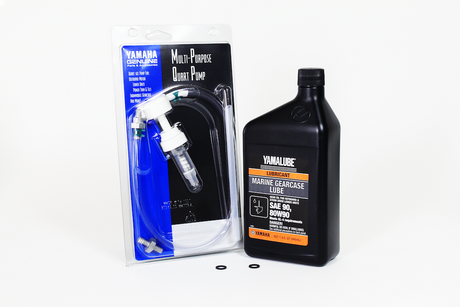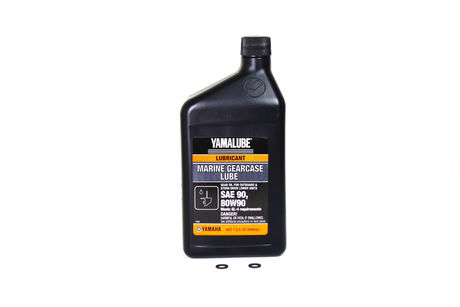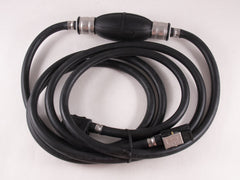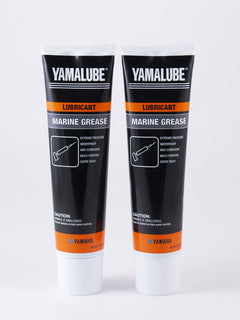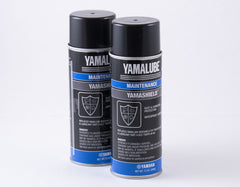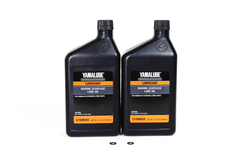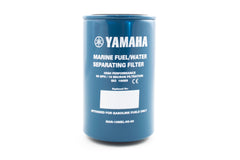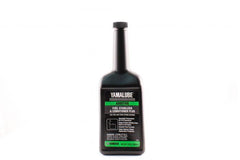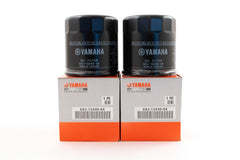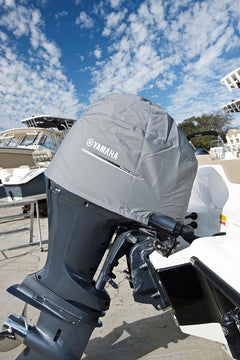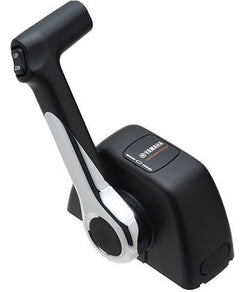Yamaha
Yamaha ACC-GEARL-UB-QT - Yamalube Marine Gear Case Lube Oil - 32 oz.
$13.60 USD$14.55 USDUnit price /UnavailableYamaha
Yamaha LUB-10W30-FC-04 - Yamalube 10W30 Outboard Mineral 4M FC-W Marine Engine Oil Gallon
$35.05 USD$37.90 USDUnit price /UnavailableYamaha
Yamaha LUB-10W30-FC-12 - Yamalube 10W30 Outboard Mineral 4M FC-W Marine Engine Oil Quart
$10.31 USD$11.15 USDUnit price /UnavailableYamaha
Yamaha ACC-GLUBE-HD-QT - Yamalube 4.2L V6 V8 VMAX SHO Marine Gear Case Lube Oil HD
$13.68 USD$14.65 USDUnit price /UnavailableYamaha
Yamaha LUB-05W30-FC-04 - Yamalube 5W30 Full Synthetic 4M FC-W Outboard Marine Engine Oil Gallon
$59.04 USD$63.75 USDUnit price /UnavailableYamaha
Yamaha LUB-20W40-FC-12 - Yamalube 20W40 Outboard Mineral 4M FC-W Marine Engine Oil Quart
$10.99 USD$11.90 USDUnit price /UnavailableYamaha
Yamaha ACC-FSTAB-PL-32 - Yamalube Fuel Stabilizer and Conditioner Plus - 32 oz. Bottle
$10.94 USD$13.55 USDUnit price /UnavailableYamaha
Yamaha ACC-GREAS-10-CT - Yamalube Marine Grease Lubricant - 10 oz
$7.71 USD$9.55 USDUnit price /UnavailableYamaha
Yamaha LUB-20W40-FC-04 - Yamalube 20W40 Outboard Mineral 4M FC-W Marine Engine Oil Gallon
$36.77 USD$39.55 USDUnit price /UnavailableYamaha
Yamaha ACC-GREAS-14-CT - Yamalube Multi Purpose Marine Grease Lubricant - 14 oz Cartridge
$9.00 USD$10.00 USDUnit price /UnavailableYamaha
Yamaha ACC-YAMSH-LD-00 - Yamashield Rust & Corrosion Protectant - 12 oz. Spray Can
$10.54 USD$10.99 USDUnit price /UnavailableYamaha
Yamaha ACC-RNGFR-PL-12 - Yamalube Outboard Ring Free Plus Fuel Additive - 12 oz
$23.93 USD$26.90 USDUnit price /UnavailableYamaha
Yamaha ACC-MRNPA-IT-8D - Marine Outboard Engine Cowling Spray Paint 8D - Dark Blue Gray (12 oz.)
$11.43 USD$12.30 USDUnit price /UnavailableYamaha
Yamaha ACC-PUMP0-00-QT - Lower Unit Gear Case Lube Oil Quart Pump Multi-Purpose
$26.04 USD$26.99 USDUnit price /UnavailableYamaha
Yamaha ACC-SLCNS-PR-AY - Yamalube Marine Silicone Spray Lubricant - 10.5 oz.
$9.85 USD$9.99 USDUnit price /UnavailableYamaha
Yamaha ACC-STORE-RI-TE - Yamalube Stor-Rite Engine Fogging Oil - 12 oz.
$8.07 USD$9.99 USDUnit price /UnavailableYamaha
Yamaha ACC-FSTAB-PL-12 - Yamalube Fuel Stabilizer and Conditioner Plus - 12 oz. Bottle
$6.28 USD$6.75 USDUnit price /UnavailableYamaha
$12.33 USD$13.15 USDUnit price /UnavailableYamaha
$12.33 USD$13.15 USDUnit price /UnavailableYamaha
Yamaha ACC-STORR-IT-32 - Yamalube EFI Engine Storage Fogging Oil - 32 OZ.
$9.24 USD$11.45 USDUnit price /UnavailableYamaha
Yamaha ACC-RNGFR-PL-32 - Yamalube Outboard Ring Free Plus Fuel Additive - 32 oz
$55.96 USD$69.30 USDUnit price /UnavailableYamaha
Yamaha ACC-GEARL-UB-GL - Yamalube Marine Gear Case Lube Oil - 1 Gallon
$38.49 USD$41.50 USDUnit price /UnavailableYamaha
$11.43 USD$12.30 USDUnit price /UnavailableYamaha
Yamaha LUB-05W30-FC-12 - Yamalube 5W30 Full Synthetic 4M FC-W Outboard Marine Engine Oil Quart
$16.14 USD$17.35 USDUnit price /UnavailableYamaha
Yamaha ACC-PWRTR-MF-32 - Yamalube Power Trim & Tilt Fluid - Quart
$12.11 USD$13.00 USDUnit price /UnavailableYamaha
Yamaha LUB-2STRK-M1-04 - Yamalube 2M TCW3 2 Stroke Marine Oil Gallon
$44.84 USD$48.25 USDUnit price /UnavailableYamaha
Yamaha ACC-HNDPU-MP-01 - Multi-Purpose Quart & Gallon Pump
$25.16 USD$26.99 USDUnit price /UnavailableYamaha
Yamaha Yamalube 10W-40 Mineral 4W Gallon – LUB-10W40-WV-04
$31.37 USD$31.99 USDUnit price /UnavailableYamaha
Yamaha ACC-MRNPA-IT-NA - Marine Outboard Engine Cowling Spray Paint NA - SHINY BLACK - 12 OZ.
$11.28 USD$12.15 USDUnit price /UnavailableYamaha
Yamaha Yamalube 10W-40 Mineral 4W 32 oz – LUB-10W40-WV-12
$9.70 USD$10.99 USDUnit price /UnavailableYamaha
Yamaha ACC-GLUBE-HD-GL - Yamalube 4.2L V6 V8 VMAX SHO Marine Gear Case Lube Oil HD - 1 Gallon
$42.75 USD$46.15 USDUnit price /UnavailableYamaha
Yamaha ACC-MOLDM-GS-05 - Molybdenum disulfide grease 4.
$6.11 USD$6.25 USDUnit price /UnavailableYamaha
Yamaha LUB-2STRK-M1-12 - Yamalube 2M TCW3 2 Stroke Marine Oil Quart
$12.55 USD$13.45 USDUnit price /UnavailableYamaha
$26.63 USDUnit price /UnavailableYamaha
$16.64 USDUnit price /Unavailable
Yamalube Products for Yamaha Outboard Motors
Yamalube products are specially formulated to meet the specific demands and unique operation of Yamaha outboard engines, as well as outboard engines from other marine engine manufacturers. YamahaOnlineParts.com stocks a complete selection of Yamalube lubricants, fuel additives, fogging oils, greases, marine spray paint, and more. We offer next-day shipping on all in-stock Yamaha OEM Parts and Accessories.
Need help servicing your Yamaha outboard motor? We also provide these helpful resources:
Browse our complete selection of Yamalube products:
- Yamalube Lubricants & Corrosion Inhibitors
- Yamalube Marine Greases
- Yamalube Marine Gear Lube
- Yamabond & Yamaclean Products
- Yamalube Fogging Oils & Fuel Additives
- Yamalube Spray Paint for Yamaha Outboard Engines
- Yamaha Oils
Yamalube Products for Yamaha Outboard Motors FAQs
How do I perform an oil change on my Yamaha 4-stroke outboard motor?
If your Yamaha 4-stroke outboard motor is equipped with an oil injection system and the oil tank is located inside the boat, you should start the service by accessing this tank. It is possible that the tank is situated in an awkward spot, thus you may need to take out a livewell tub, a cooler, or an access panel to get to it. Unfasten the tank from its bracket and find the oil supply hose that connects the tank to the engine. During the route, you will spot a small, white, inline filter that filters the Yamaha 20W-40 4-stroke outboard oil on its way to the engine.
It's easy to overlook this small filter, but it's essential that your engine gets a consistent flow of Yamalube 20W-40 4-stroke outboard motor oil. If you don't, it could soon downshift or worse. Snip the zip ties that link the oil line to the strainer and replace the strainer speedily before oil spills into the bilge. This can get quite messy, so it's a wise idea to have some petroleum-absorbing pads nearby. Additionally, it's smart to have some good-quality nitrile gloves on the boat or nearby for when you're servicing it.
Unfasten the tank from its mount and use a small service flashlight to brightly light up the lower corners of the tank, as the clear plastic can make it possible to spot any water or debris inside. If you find anything, the tank must be taken out, drained and cleaned. This debris usually comes from leaving the fill caps open, having faulty fill cap o-rings, or from using dirty containers when buying in bulk.
When complete, reinstall the tank into the bracket and remove the cowling from your engine. Use the manual transfer switch on the side of the engine to verify oil is flowing through your new filter and that the system is primed. Your Yamaha 4-stroke oil maintenance is now complete. You are ready to begin your engine service.
Can I use automotive engine oil in my Yamaha 4-stroke outboard engine?
Boaters often question the need for specialized marine motor oil for their Yamaha outboard, but the simple fact is that motor oil for automobiles is not suitable for marine engines. Yamaha outboard motors are very different from car engines and thus require a specific type of oil that is developed for use in a marine environment. The two types of engine oil that are made for Yamaha outboards are Yamalube 4M for four-stroke engines and Yamalube 2M for two-stroke engines. To gain a better understanding of why automotive oil is not suitable for marine engines, let's explore some of the main reasons.
- Outboard Engine Load - The force exerted on outboard motors is usually more than what cars experience, so it requires greater energy for them to function properly. Yamalube 4M and 2M oils contain additives specifically designed to counteract this increased drag.
- Yamaha Outboard Engine Speed - As compared to car engines, Yamaha outboard motors operate at a higher revolutions per minute (RPM) rate. This rate can range from 4500-6000 RPM, instead of the 2500 RPM car engines reach when on the highway. This rapid rotation can be quite taxing on the oil, potentially reducing its lubricity by breaking down the molecules. To combat this issue, Yamalube 4M and 2M outboard engine oils contain special polymers that remain stable when exposed to shear force, ensuring the oil continues to provide superior lubrication.
- Yamaha Outboard Operating Temperature - Yamaha outboard motors use natural, cold water to cool the engine. Saltwater, however, can become solidified if its temperature goes beyond 170° F, blocking the cooling system and causing the engine to overheat and potentially become damaged. This is why the engine operates at a much lower temperature than a car and why Yamalube marine oils are formulated with specific cleansing, dispersing, and viscosity-modifying agents to address the particular needs of marine engines.
- Outboard Operating Environment - Your Yamaha outboard motor relies on air taken straight from the surface of the water to function, as it is often in close proximity to it. Yamalube outboard engine oils are designed to offer distinct protection compared to other oils, containing a special combination of marine-specific anti-wear additives, shear-stable polymers, corrosion inhibitors, detergents, dispersants, and viscosity index improvers. In summary, they are much better at protecting the engine, having more resilience and resistance to corrosion than automotive engine oils.
How is Yamalube 20W-40 marine motor oil different?
Yamaha has dedicated a lot of time and money to making sure that the most reliable and suitable Yamalube 20W-40 marine motor oil is used in their outboard engines. YamahaOnlineParts.com can guarantee that this oil was created to endure even the most extreme marine conditions and Yamaha outboard operations. Genuine Yamalube marine motor oils are capable of withstanding long periods of full-throttle running, intense acceleration, and extended trolling.
Yamalube oil not only provides enhanced lubrication and anti-corrosion defense for marine outboard motors, it also helps to avoid sticking of the piston rings, accumulation of carbon, and the formation of a varnish. In comparison to passenger car oils, Yamalube 4-stroke engine oils have the most effective anti-foam formula and have been officially verified by the National Marine Manufacturers Association.
Why lubricate my Yamaha lower unit gearcase components?
The components in the Yamaha lower unit are kept in motion with the help of the lubricant. It builds a thin film between the metal parts, preventing them from making contact with each other. The lubricant should be able to withstand heavy pressure, reduce foaming, and prevent molecular shear. Besides, it must be able to keep its lubricity even if water enters the lower unit. An automotive or tractor gear oil should not be used; instead, Yamalube Marine Gearcase Lube, a high-quality marine-based lubricant, should be used. It can provide all the necessary protection and lubrication even when 10% of water is present. There is also an HD formula for the V MAX SHO, 4.2L V6 Offshore, and 5.3L F350 V8 outboard lower units.
How do I stabilize the fuel system of my Yamaha outboard motor?
Before stabilizing the fuel system of your Yamaha outboard engine, you’ll need the following::
- Fuel stabilizer suitable for long-term storage
- Motor flusher
- Garden hose
- Water supply
As ethanol-enriched gas has become a widely used fuel source, it is highly suggested to utilize a fuel stabilizer every time you run such kind of gasoline. To know the reasons behind this, you can go through our article about ethanol-enriched gasoline in outboard engines. Moreover, it is essential to use a fuel stabilizer like Yamaha Fuel Stabilizer and Conditioner Plus if your boat remains unused for more than two or three months.
For storage periods lasting longer than two months, the label of the fuel stabilizer product should be consulted for the recommended amount to add to your fuel tank. For Yamaha Fuel Stabilizer and Conditioner Plus, it is suggested to add one ounce per gallon of gasoline. For shorter storage periods of two months or less, the ratio is lowered to 1 ounce for every three gallons.
Activate the motor with stabilized fuel for a period of 10-15 minutes in order to completely spread the stabilized fuel around the fuel system. If your vessel is not in the water, follow the directions outlined in the 'Flush Your Outboard with the Engine Running' process.
All Yamalube products are engineered to meet the unique demands, operating characteristics, and applications of Yamaha outboard engines. Yamaha Online Parts carries the full line of Yamalube products specially formulated to protect your Yamaha outboard. Shop Yamashield Rust & Corrosion Protectant, Yamalube Marine Silicone Spray Lubricant, Yamalube 10W30 Outboard Mineral Oil, and more!


